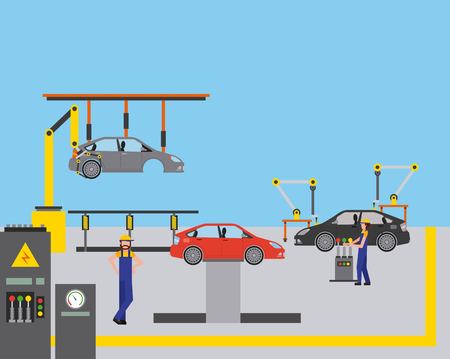1. Introduction: The Importance of Mileage for Indian Car Owners
In India, fuel efficiency is a top priority for most car buyers and daily commuters. With the ever-increasing petrol and diesel prices, Indian families are keenly aware of how much they spend at the fuel station each month. Traffic congestion in metropolitan cities like Mumbai, Delhi, and Bengaluru further exacerbates fuel consumption, as vehicles often idle in slow-moving traffic jams or crawl through narrow bylanes. Moreover, typical driving habits in India—such as frequent braking, use of air conditioning during hot summers, and short-distance city commutes—directly impact mileage. For many Indian households, a vehicle’s running cost plays a crucial role in their purchasing decision. This makes advanced fuel-saving technologies not just an attractive feature but almost a necessity for modern car buyers looking to stretch every litre of fuel. As automakers introduce smarter, more efficient solutions tailored to local conditions, understanding how these innovations work becomes essential for anyone aiming to maximise their car’s mileage on Indian roads.
2. Overview of Smart Fuel-Saving Technologies in India
The modern Indian automotive landscape is rapidly evolving with a strong focus on fuel efficiency, driven by rising fuel prices and growing environmental concerns. Today’s car buyers in India are increasingly seeking vehicles that offer not only value for money but also advanced technologies to maximise mileage. Manufacturers are responding by integrating smart fuel-saving tech into new models, which are designed to suit Indian road conditions and driving habits.
Key Fuel-Saving Technologies in Modern Indian Cars
Below is an overview of the most prominent smart fuel-saving technologies now available in Indian cars:
| Technology | Description | Commonly Found In |
|---|---|---|
| Start-Stop Systems | This system automatically switches off the engine when the vehicle is idling (such as at traffic signals) and restarts it when the driver engages the clutch or releases the brake, significantly reducing unnecessary fuel consumption during frequent stops common on Indian roads. | Maruti Suzuki, Hyundai, Tata Motors |
| Regenerative Braking | This technology captures and stores energy usually lost during braking and uses it to recharge the battery or assist with acceleration, enhancing overall fuel efficiency. It is especially effective in city traffic conditions. | Electric & Hybrid Models (Toyota Camry Hybrid, Tata Nexon EV) |
| Advanced Engine Management Systems | Modern ECUs (Electronic Control Units) optimise fuel injection, ignition timing, and air-fuel mixture based on real-time driving conditions, ensuring efficient combustion and reduced wastage. | All major brands including Mahindra, Honda, Kia |
| Lightweight Materials & Aerodynamics | Use of high-strength steel, aluminium alloys, and improved aerodynamic designs help reduce vehicle weight and drag, allowing for better mileage without sacrificing safety or comfort. | Premium models (Hyundai i20, Maruti Baleno) |
| Low Rolling Resistance Tyres | Special tyres that reduce friction with the road surface, thereby demanding less power from the engine to move the car forward—ideal for urban Indian environments. | Tata Altroz, Maruti Swift |
Cultural Fit: Tailoring Technology for Indian Roads
The implementation of these technologies takes into account India’s unique driving environment—heavy stop-and-go city traffic, varied terrains, and climatic conditions. Car makers are customizing their offerings to ensure optimal performance and reliability under such circumstances. With consumers becoming more tech-savvy and environmentally conscious, adoption of these features is steadily increasing across both mass-market and premium segments.

3. How Indian Manufacturers Localise Eco-Friendly Innovations
Indian automotive giants such as Maruti Suzuki, Tata Motors, and Mahindra have been at the forefront of adapting global smart fuel-saving technologies to fit uniquely Indian requirements. Unlike in Western markets, where road and weather conditions are more predictable, Indian roads often present challenges like frequent stop-and-go traffic, rough terrains, and varying climatic conditions from extreme heat to monsoon rains. To address these challenges, local manufacturers focus on customising imported innovations for maximum efficiency and reliability on Indian roads.
Integration with Indian Road Realities
Maruti Suzuki, for example, has introduced their proprietary Smart Hybrid Vehicle by Suzuki (SHVS) system across several models. This mild-hybrid technology utilises features like idle start-stop and brake energy regeneration, specifically calibrated to cope with heavy city traffic typical in metros like Mumbai or Bengaluru. Tata Motors and Mahindra also integrate advanced engine management systems that optimise fuel injection timing and air-fuel mixture for Indian fuel quality and driving cycles.
Climate-Responsive Engineering
Indian summers can be harsh, putting additional stress on engines and air conditioning systems. Manufacturers address this by enhancing thermal management solutions—such as improved radiator designs and better airflow systems—to prevent overheating while maintaining fuel efficiency. Advanced ECU algorithms ensure that fuel-saving measures do not compromise the cooling needs required in cities like Delhi or Chennai during peak summer months.
Affordability and Serviceability
Understanding the price sensitivity of the Indian market, carmakers strive to keep smart fuel-saving tech both affordable and easy to maintain. They use locally sourced components wherever possible, reducing costs without sacrificing quality or performance. Additionally, regular service intervals and widespread service networks ensure that even advanced features remain accessible and reliable for the average Indian car owner.
Through localisation strategies that consider real-world conditions and consumer needs, Indian car manufacturers successfully bridge the gap between global innovation and practical daily use. This approach not only delivers better mileage but also ensures long-term sustainability and satisfaction for Indian drivers.
Impact of Driving Patterns and Traffic on Mileage
When it comes to fuel efficiency in India, the effectiveness of smart fuel-saving technology is closely tied to real-world driving conditions. Major Indian cities like Mumbai, Delhi, and Bengaluru are notorious for heavy congestion, frequent idling, and stop-start traffic. On the other hand, highway driving presents different challenges with longer stretches of steady speed but often inconsistent road quality and unpredictable traffic. Understanding these patterns is crucial for evaluating how modern tech features work in practice.
How Driving Patterns Affect Fuel-Saving Tech
Smart fuel-saving technologies such as automatic start-stop systems, regenerative braking, and adaptive cruise control deliver optimal performance when they align with the driver’s typical usage. In urban settings, where vehicles spend considerable time idling or moving at low speeds, start-stop systems can significantly reduce fuel wastage. However, their impact is diminished if a driver frequently turns off this function due to discomfort or slow response times. Similarly, features like regenerative braking are most effective in stop-go city traffic rather than on highways.
Comparison Table: City vs Highway Impact
| Driving Scenario | Common Traffic Pattern | Effective Smart Features | Fuel-Saving Potential |
|---|---|---|---|
| Urban (City) | Heavy congestion, stop-start movement | Start-Stop System, Regenerative Braking | High |
| Highway (Intercity) | Long steady speeds, fewer stops | Adaptive Cruise Control, Aerodynamic Design | Moderate to High |
| Semi-Urban/Rural | Mixed speeds, irregular traffic flow | Eco-Drive Modes, Lightweight Materials | Variable |
Cultural Considerations in Indian Driving Habits
The Indian approach to driving also impacts the adoption and efficiency of these technologies. Many drivers favour frequent gear changes and aggressive acceleration, which can undermine the benefits of smart fuel-saving features. Additionally, unpredictable elements such as roadside vendors, jaywalkers, and auto-rickshaws require constant vigilance and quick reaction—factors that current technology may not always account for efficiently.
In summary, while modern cars offer an array of intelligent fuel-saving options tailored for India’s evolving automotive landscape, their real-world efficiency largely depends on local driving habits and traffic patterns. Manufacturers must continue to innovate solutions that address unique Indian challenges to maximise mileage improvements across diverse environments.
5. Tips for Indian Drivers to Enhance Mileage with Modern Features
Combine Smart Tech and Traditional Wisdom
Indian driving conditions present unique challenges, from heavy city traffic in Mumbai or Delhi to unpredictable rural roads. To make the most of modern fuel-saving technologies in your car, its essential to blend these innovations with time-tested local driving practices.
Leverage Real-Time Fuel Efficiency Displays
Most new cars come equipped with instant mileage indicators and trip computers. Make it a habit to monitor these displays and adjust your acceleration and braking patterns accordingly. Smooth acceleration and gentle braking can significantly improve your fuel economy, especially in stop-and-go Indian traffic.
Utilise Eco Modes and Start-Stop Systems
Modern cars often feature dedicated Eco modes that optimise engine performance for lower fuel consumption. Engage this mode during city commutes or when cruising on highways. Additionally, if your vehicle has an automatic start-stop system, keep it activated in congested areas like Bengalurus Outer Ring Road to cut down idle fuel wastage at long signals.
Maintain Optimal Tyre Pressure
Potholes, uneven roads, and temperature swings are common across India. Regularly check and maintain tyre pressure as recommended by the manufacturer. Under-inflated tyres increase rolling resistance and reduce mileage—a simple yet crucial habit for Indian motorists.
Schedule Timely Service and Use Quality Fuel
Adhering to scheduled maintenance ensures that sensors, injectors, and other tech-driven systems function efficiently. Always opt for reputed fuel stations, as adulterated petrol or diesel is still an issue in certain regions. Good quality fuel helps modern engines deliver promised efficiency levels.
Plan Routes Smartly with Navigation Aids
Use connected car navigation systems or smartphone apps to avoid high-traffic zones, roadblocks, or poorly maintained stretches. Shorter, smoother routes mean less idling and more consistent speeds—key factors for maximising mileage in Indian conditions.
Local Insight: Drive Mindfully During Peak Hours
Finally, combine smart technology with traditional wisdom: plan journeys during non-peak hours whenever possible. Early mornings or late evenings typically see lighter traffic across most Indian cities, allowing you to maintain steady speeds and fully leverage your vehicle’s fuel-saving features for better mileage.
6. Future Outlook: The Path Ahead for Indian Fuel Efficiency
As India continues to urbanise rapidly and the demand for personal mobility rises, the future of fuel efficiency in Indian cars is set for significant transformation. Modern smart fuel-saving technologies have already made a substantial impact on vehicle mileage, but industry experts anticipate even more remarkable developments ahead. Evolving trends indicate a strong push towards electrification, hybrid systems, and advanced powertrain optimisation specifically tailored for Indian driving conditions.
Regulatory Changes Shaping the Market
The Government of India has been proactive in implementing stricter Corporate Average Fuel Efficiency (CAFE) norms and Bharat Stage emission standards. These regulations are compelling automakers to innovate continuously, adopting lightweight materials, low rolling-resistance tyres, and improved aerodynamics. Such measures not only support better mileage but also align with Indias commitment to reducing carbon emissions and improving air quality.
Upcoming Smart Technologies
The next wave of smart fuel-saving tech will see deeper integration of telematics and connected car solutions. Features like real-time driving analytics, AI-based route optimisation, and adaptive cruise control are poised to become mainstream. Additionally, greater adoption of start-stop systems and regenerative braking in mass-market vehicles will further enhance fuel economy for Indian consumers.
Localized Innovations for Indian Roads
Considering Indias unique road conditions—ranging from dense city traffic to rural terrains—automakers are focusing on developing region-specific solutions. This includes intelligent transmission systems that adapt to stop-and-go traffic patterns, as well as engines optimised for varied fuel qualities commonly available across the country. Such innovations ensure that smart fuel-saving technology remains relevant and effective for diverse Indian users.
Consumer Awareness and Adoption
With increased awareness about rising fuel prices and environmental concerns, Indian car buyers are showing a clear preference for vehicles equipped with advanced fuel-saving features. This growing demand is encouraging manufacturers to offer more affordable variants packed with smart tech, making efficient mobility accessible to a broader segment of the population.
In conclusion, the path ahead for Indian fuel efficiency is bright and promising. With ongoing regulatory support, technological innovation, and heightened consumer interest, the journey towards smarter, greener, and more economical cars in India is set to accelerate in the coming years.

